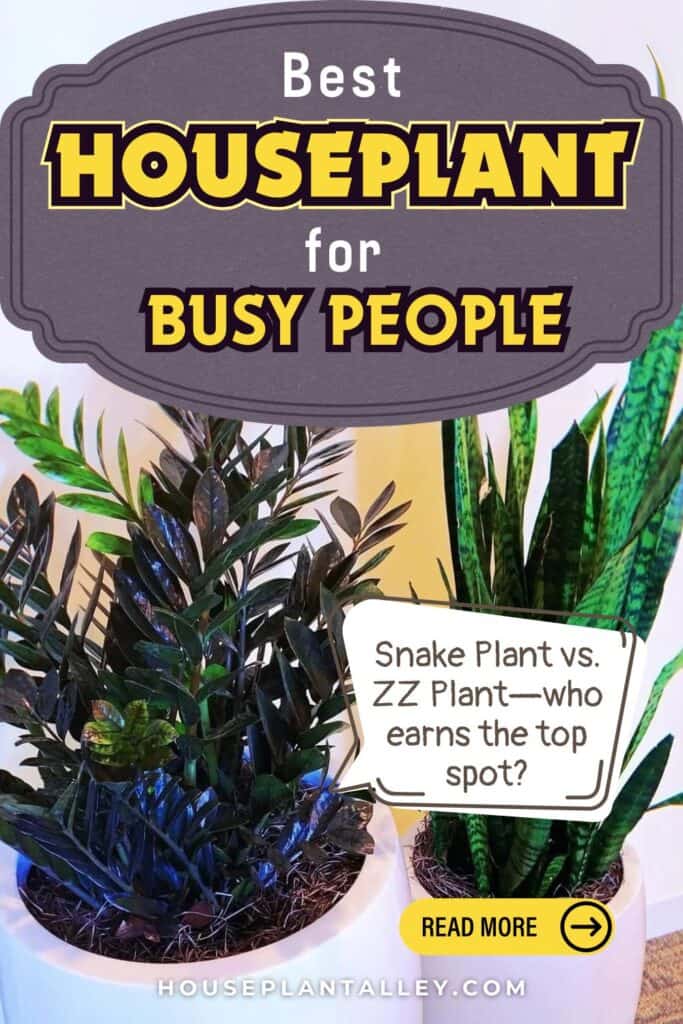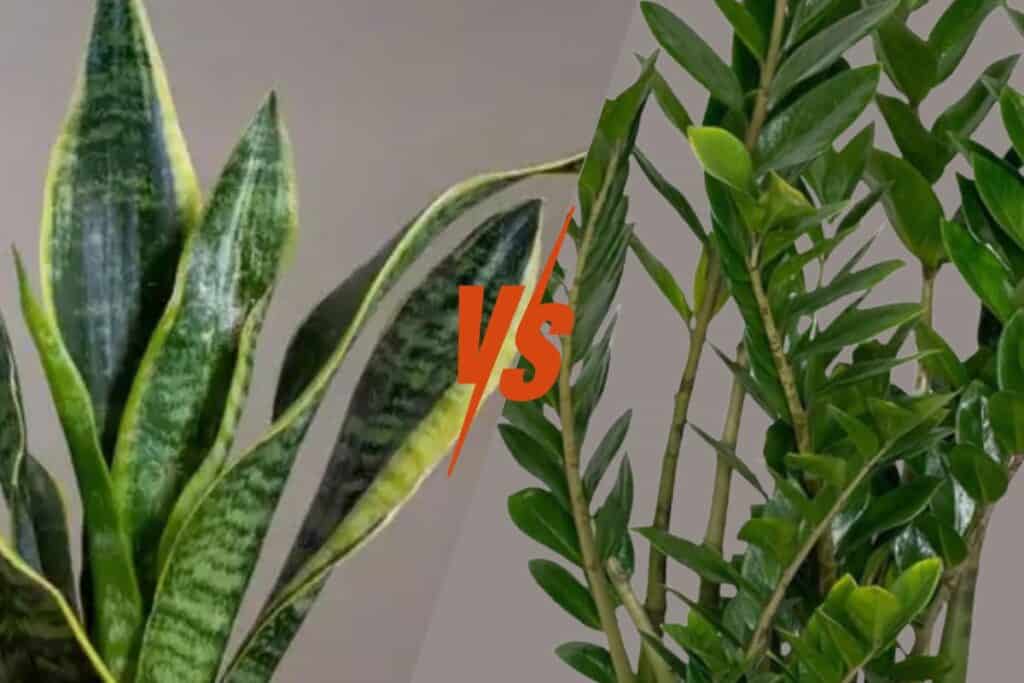Like two zen masters in a garden, the Snake Plant and ZZ Plant have earned their reputation as the ultimate low-maintenance houseplants. You’ll find both these resilient beauties thriving in conditions that would make other plants wither, from dim office corners to drought-prone windowsills. Before you choose between these botanical champions, let’s explore how their unique characteristics stack up in the battle for easiest houseplant supremacy.

Contents
Meet the Contestants: Origins and Characteristics
In the battle of low-maintenance houseplants, the Snake Plant and ZZ Plant stand as two formidable competitors. Let’s explore their distinct backgrounds and features that make them popular choices for indoor growing.
The Snake Plant (Sansevieria trifasciata) hails from West Africa’s tropical regions, featuring upright, sword-like leaves that grow 6-8 feet tall. You’ll recognize its distinctive yellow-edged foliage and deep green stripes.
Native to Eastern Africa, the ZZ Plant (Zamioculcas zamiifolia) showcases glossy, dark green pinnate leaves growing from thick rhizomes. It typically reaches 2-3 feet in height, with each stem producing 6-8 pairs of oval leaflets arranged symmetrically.

Light Requirements and Adaptability
While both plants have earned reputations as shade-tolerant champions, they’ll actually thrive in a range of lighting conditions. Your Snake Plant prefers indirect light but can handle 2-3 hours of direct sun, while ZZ Plants flourish in low to moderate light, managing just fine under fluorescent bulbs.
You’ll find Snake Plants more adaptable to bright conditions, tolerating up to 6 hours of filtered sunlight. ZZ Plants, however, excel in shadier spots, growing steadily even 8-10 feet from windows. Just avoid placing either in harsh afternoon sun, as their leaves can scorch, particularly between 2-4 PM.
Water Needs and Drought Tolerance
Both Snake Plants and ZZ Plants shine when it comes to drought tolerance, making them perfect companions for forgetful waterers. You’ll only need to water your Snake Plant every 2-3 weeks in spring and summer, while stretching to 4-6 weeks in winter.
ZZ Plants can go even longer between waterings, thriving on a 3-4 week schedule during growing seasons and up to 8 weeks in winter. When you do water, make certain the soil dries completely between sessions, as both plants are susceptible to root rot.
Always check the soil’s moisture level by inserting your finger 2 inches deep – if it’s still damp, wait longer.
Growth Patterns and Space Requirements
Although Snake Plants and ZZ Plants share similar care needs, their growth patterns couldn’t be more different. Snake Plants grow vertically, with sword-like leaves reaching 2-4 feet tall in tight clusters, while staying relatively narrow at 4-6 inches wide per cluster.
ZZ Plants spread outward with arching stems, typically growing 2-3 feet wide and 2-3 feet tall. You’ll want to give your ZZ Plant more horizontal space as it matures. Its stems emerge from underground rhizomes, creating a fuller, bushier appearance.
Both plants can be contained in their pots for years, but you’ll need to take into account their natural growth directions when choosing display locations and pot sizes.
Air Purification and Health Benefits
When NASA released their Clean Air Study in 1989, Snake Plants and ZZ Plants emerged as top performers for removing indoor air pollutants. Snake Plants excel at filtering out formaldehyde, benzene, and trichloroethylene, converting CO2 to oxygen even at night.
While ZZ Plants weren’t part of NASA’s original study, they’ve proven effective at removing xylene, toluene, and other volatile organic compounds (VOCs). You’ll benefit from their ability to increase humidity levels by 5-10% in your space.
Both plants are non-toxic to humans, but Snake Plants can cause mild discomfort in pets if ingested. ZZ Plants contain calcium oxalate crystals, so you’ll want to keep them away from curious pets and children.
Common Problems and Care Solutions
Despite their reputation for being low-maintenance, Snake Plants and ZZ Plants can face several common issues that’ll need your attention. For Snake Plants, the most frequent problem is root rot from overwatering, while ZZ Plants often develop yellow leaves due to inconsistent moisture levels.
If you notice your Snake Plant’s leaves becoming soft and mushy, immediately check the roots and remove any brown, rotted sections. For ZZ Plants, trim yellowed leaves at the base and adjust your watering schedule to every 2-3 weeks, allowing the top 2 inches of soil to dry completely.
Both plants can attract mealybugs, which you’ll need to remove with rubbing alcohol-soaked cotton swabs.
